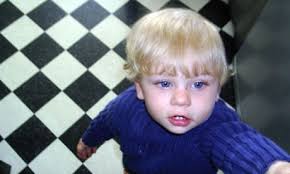The Tragic Case of Baby P: A Wake-Up Call for Child Protection

Introduction
The case of Baby P, whose real name was Peter Connelly, is a deeply tragic event that has left a profound impact on child protection laws in the United Kingdom. In 2007, this case unveiled serious failures within social services and highlighted the critical need for reform in child welfare systems. The importance of this topic lies not only in the horrors of the case itself but also in the lessons learned that continue to shape policies aimed at protecting vulnerable children.
The Events Surrounding Baby P
Born on March 1, 2006, Baby P’s life was cut tragically short when, at the age of just 17 months, he died while in the care of his mother, her boyfriend, and a lodger. Following his death in August 2007, it was revealed that he had suffered over 50 injuries, including broken ribs and a fractured spine, despite being under the watch of social services. The horrific details came to light during the subsequent trial, leading to a public outcry over the failure of multiple authorities to protect him.
Systemic Failures in Child Protection
The Baby P case prompted widespread criticism of the agencies involved, including Haringey Council and the National Society for the Prevention of Cruelty to Children (NSPCC). Investigations revealed that numerous reports had been made to social services about Baby P’s welfare, yet the red flags were not adequately addressed. Following his death, significant discourse arose about the responsibility of social workers, police, and healthcare professionals in ensuring child safety.
Changes in Legislation and Reforms
In the aftermath of Baby P’s tragic death, there were several immediate reforms intended to strengthen child protection laws. The government commissioned a number of reviews, which resulted in changes to referral processes, improved training for social workers, and the establishment of better inter-agency communication protocols. The findings also led to the development of ‘Baby Peter guidelines’ aimed at ensuring that children at risk receive timely and effective intervention from social services.
Conclusion
The heart-wrenching story of Baby P serves as a grim reminder of the vulnerabilities faced by children and the ongoing challenges within the child protection system. As we reflect on this case, it is crucial for policymakers, social services, and communities alike to remain vigilant. Continuous improvement and reform are needed to ensure that no child suffers the same fate as Baby P. The legacy of this tragic case should ignite a commitment to safeguard and advocate for the welfare of all children across the UK.









